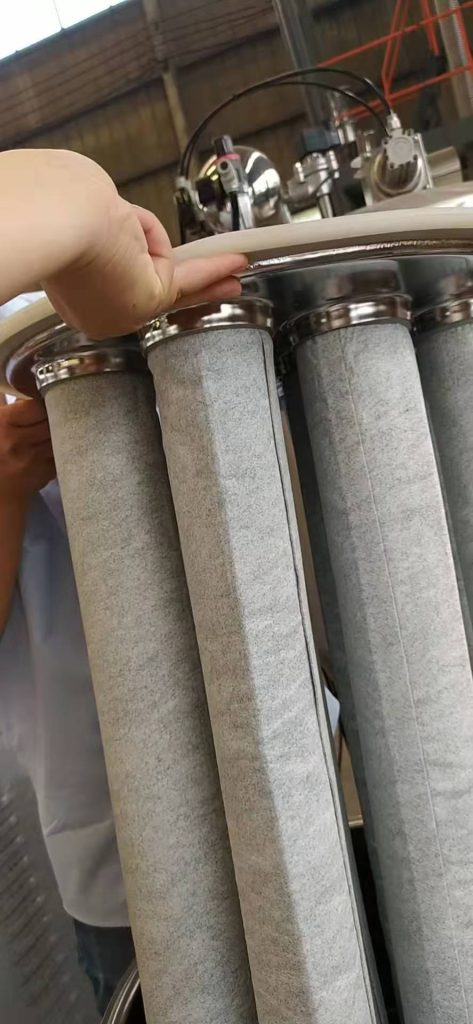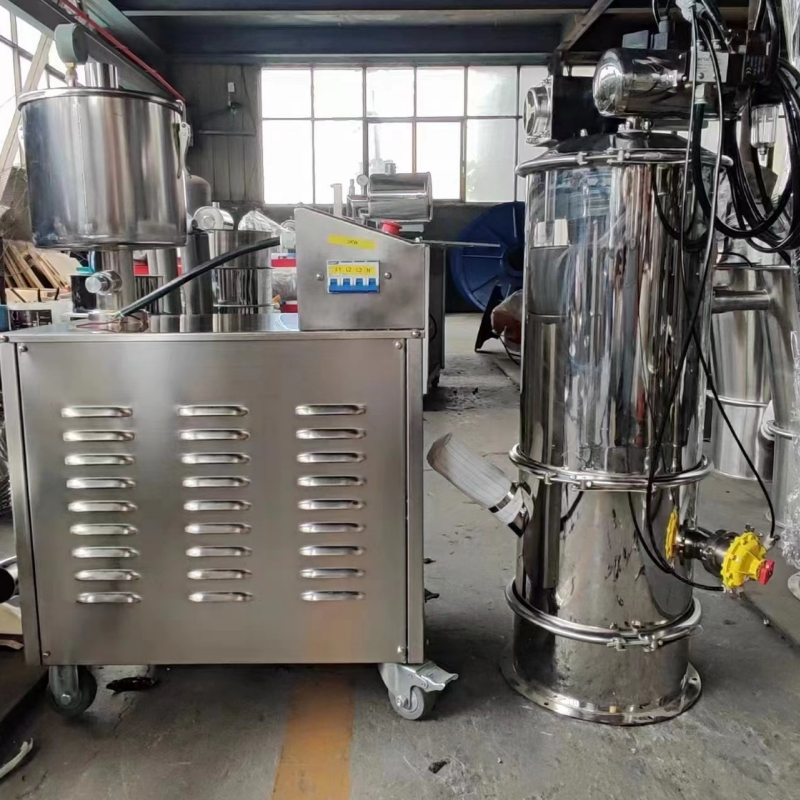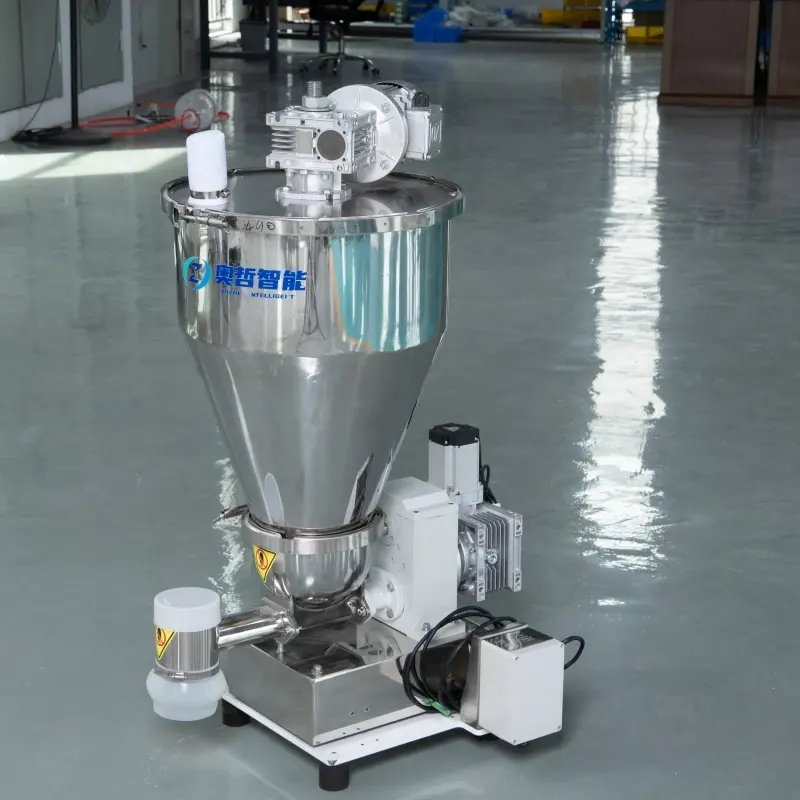How to Clean and Maintain the Vacuum Conveyor Filter
Release time: 2025-05-16
In the daily operation of vacuum conveyors, keeping the filter clean is essential to ensure optimal performance and prolong the lifespan of the equipment. Over time, the filter inevitably becomes clogged with dust, debris, and other particles. Regular maintenance and cleaning of the filter are critical for maintaining the efficient operation of the vacuum conveyor. Below is a detailed guide on how to clean and maintain the vacuum conveyor filter to extend its lifespan and ensure smooth system operation.
Step 1: Safety First – Disconnect the Power and Open the Hopper Latch
Before performing any maintenance work, make sure to turn off the vacuum conveyor and disconnect its power supply. This prevents accidental startup and ensures safety during the cleaning process. After turning off the power, locate the latch on the hopper and carefully open it. The hopper is the part that holds the filter, and opening the hopper is the first step in cleaning and maintaining the filter.
Step 2: Remove the Filter
After opening the hopper latch, carefully remove the filter. Depending on the specific model of your vacuum conveyor, the filter may be secured with screws or other fasteners. Pay attention to the orientation of the filter, as it needs to be reinstalled in the same way during reassembly. Handle the filter carefully to avoid damaging any components.

Step 3: Clean the Filter with Compressed Air
Once the filter is removed, use compressed air to thoroughly clean both the surface and the interior of the filter. Compressed air is highly effective at removing dust and debris that have accumulated in the filter system. First, blow the compressed air across the surface of the filter to remove any loose particles. Then, direct the air into the filter from the opposite end to clear any buildup inside. Be sure to use short bursts of air to avoid damaging the filter or causing debris to get lodged deep inside.
If your continuous vacuum conveyor operates in a dusty or harsh environment, this step may need to be repeated more frequently. It is also recommended to use a soft brush or cloth to clean areas of the filter that are difficult to reach, ensuring a thorough cleaning.
Step 4: Inspect for Wear and Tear
While cleaning the filter, be sure to check for signs of wear or damage. Over time, the filter may develop cracks, tears, or other damage that can affect its efficiency. If any significant damage or aging is found, the filter should be replaced. Worn filters lead to reduced suction and lower vacuum conveyor efficiency, so replacing the filter on time is essential to maintain optimal performance.

Step 5: Reinstall the Filter and Test the System
After cleaning and inspecting the filter, carefully reinstall it into the hopper, ensuring it is securely in place. Close the hopper latch and check for proper sealing to ensure there are no air leaks. Reconnect the power supply and test the system, observing its performance to ensure everything is functioning normally. Listen for any unusual sounds or signs that further maintenance may be needed.
Step 6: Replace the Filter When Necessary
The typical lifespan of a vacuum conveyor filter is between 12 to 24 months, depending on the frequency of use and the operating environment. Even with regular cleaning, filters will eventually age and lose their ability to effectively filter air. If, after cleaning, you notice that the suction power is still weak or the feeding capacity remains insufficient, it indicates that the filter needs to be replaced.
To ensure optimal performance of the vacuum conveying system, it is recommended to replace the filter with a high-quality, compatible replacement that matches the model of your machine. This will prevent operational issues caused by using incompatible filters.
Regular cleaning and inspection of the filter are crucial to keeping your vacuum conveyor running efficiently. By routinely cleaning the filter with compressed air, checking for wear, and replacing damaged filters promptly, you can extend the lifespan of the equipment and ensure it always operates at its best. Proper filter maintenance reduces the likelihood of failure, lowers repair costs, and improves overall efficiency.


